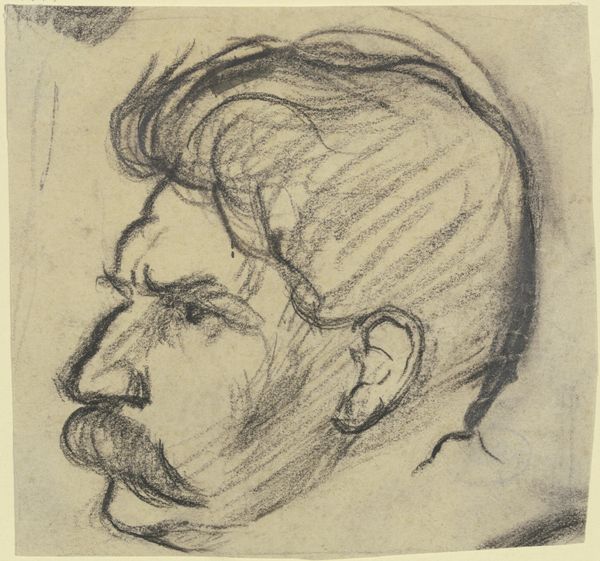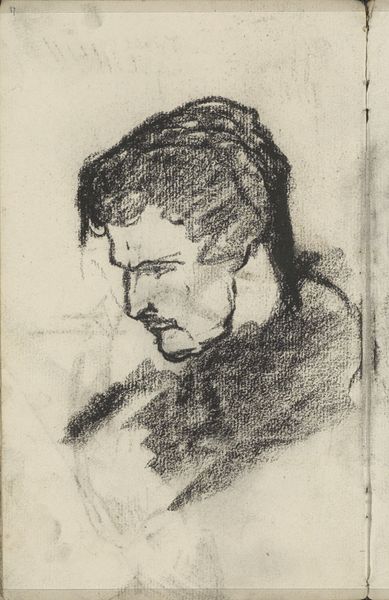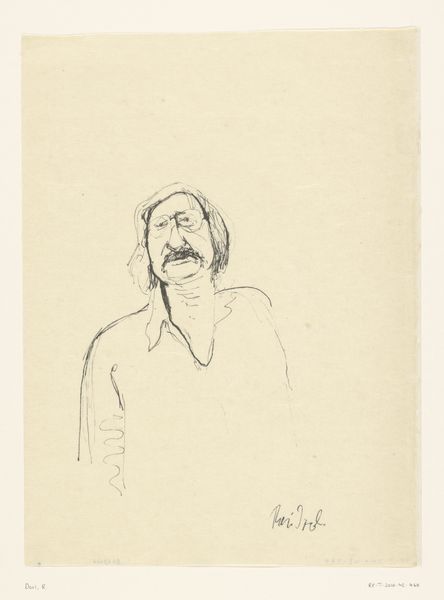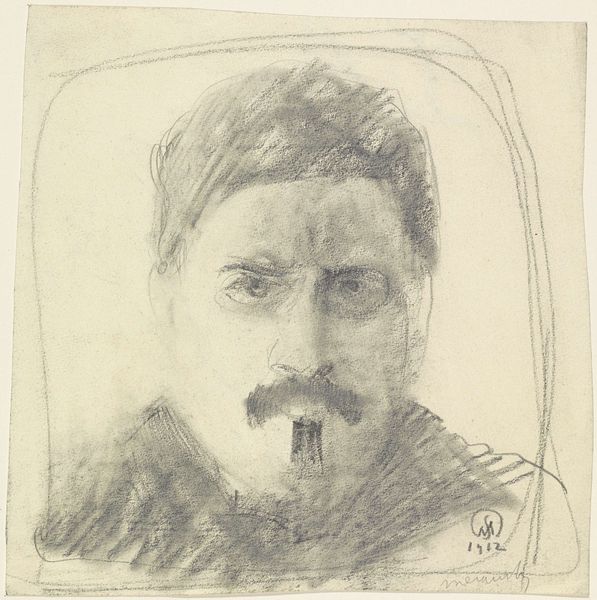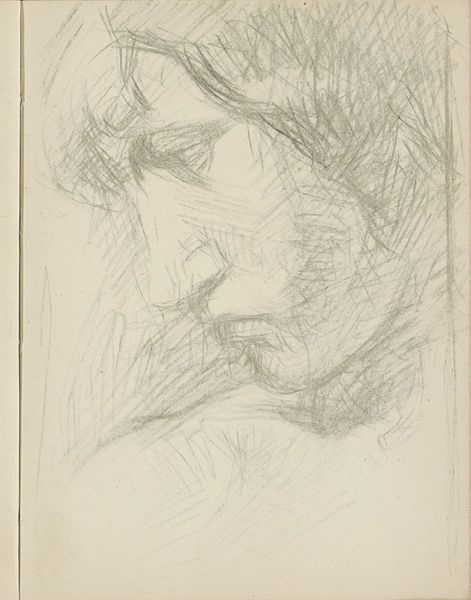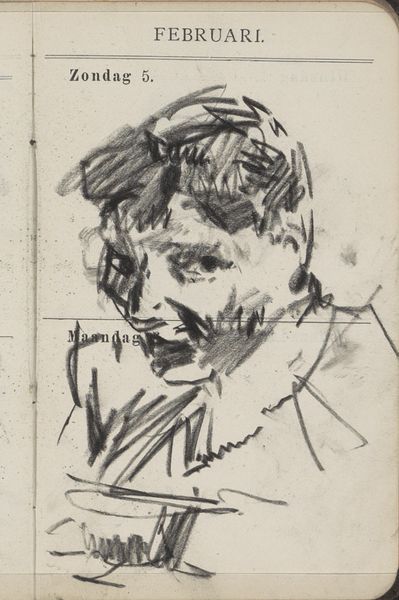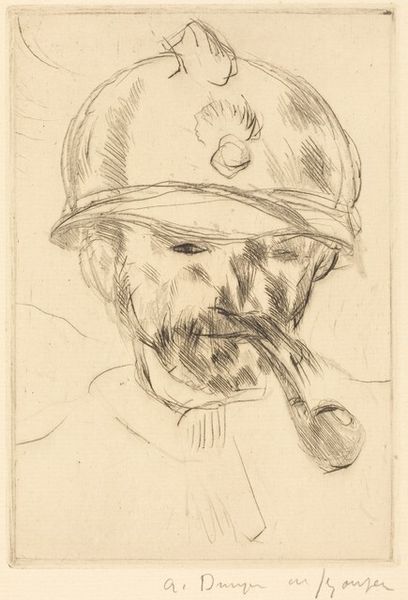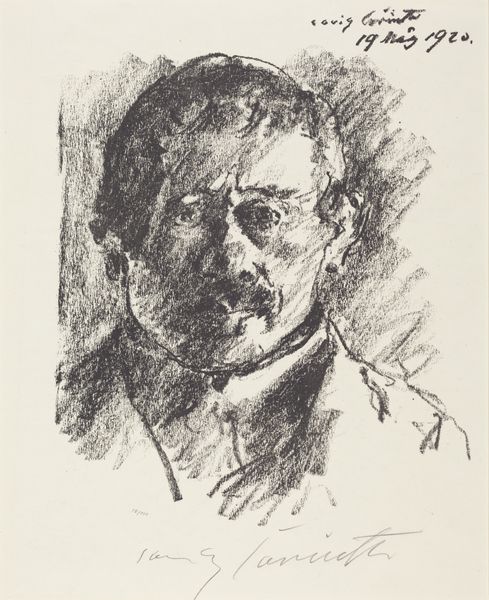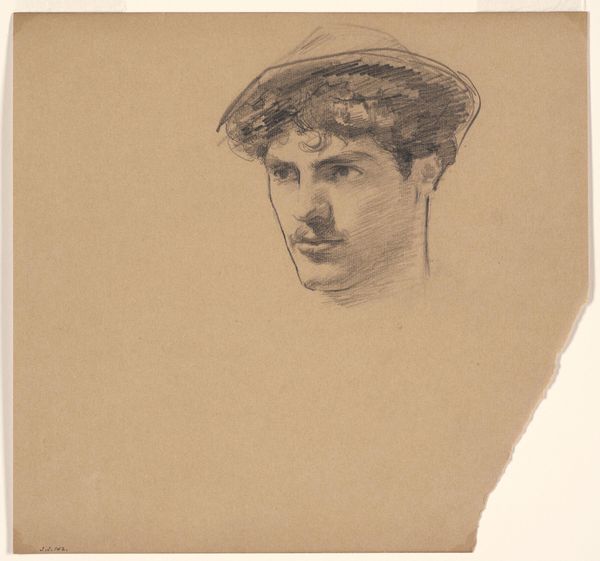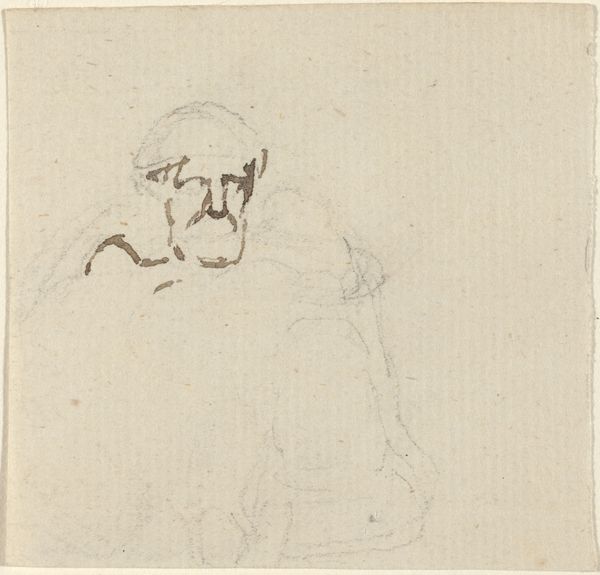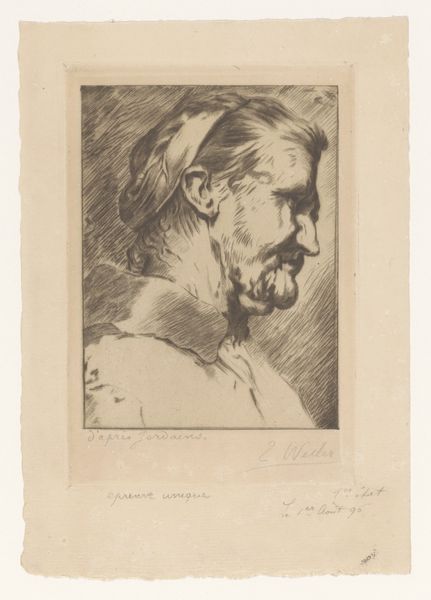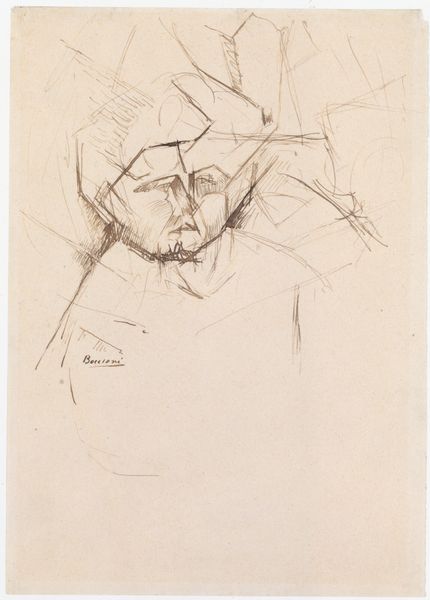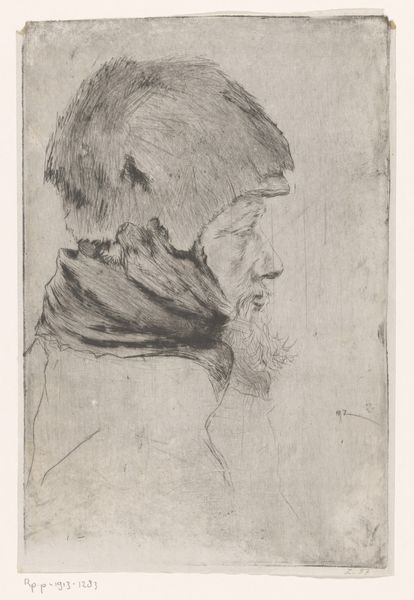
drawing, paper, pencil, graphite
#
portrait
#
17_20th-century
#
pencil drawn
#
drawing
#
amateur sketch
#
toned paper
#
light pencil work
#
pencil sketch
#
paper
#
personal sketchbook
#
german
#
sketch
#
pen-ink sketch
#
pencil
#
graphite
#
sketchbook drawing
#
portrait drawing
#
sketchbook art
Copyright: Public Domain
Curator: Welcome. Here we have a drawing of Albert Schweitzer by Mathilde Battenberg, housed here at the Städel Museum. It's a portrait done in graphite on paper. Editor: My first impression is of immediacy. You see the sketch-like quality, the raw marks of the graphite that really make the image jump out at you despite the muted tones. It feels unfinished, yet captures a great deal of his persona. Curator: Absolutely, and to consider the portrait within the broader historical context, Battenberg was a known portraitist in her circles and this work gives us insight into the cultural significance and public persona surrounding Schweitzer at the time, his impact on the intellectual scene of his era. Editor: I'd like to delve deeper into that idea of persona. Note the deep set eyes and strong mustache—there's a careful construction of masculinity here. It makes you wonder how Battenberg negotiated her position as a female artist in portraying such a prominent male figure. Curator: The sketch as artifact also offers an opportunity to examine institutional power dynamics. Why was this particular depiction chosen for preservation by the Städel, for example? What does this selection reveal about curatorial biases and the presentation of historical figures to the public? Editor: Exactly! Whose stories are privileged and how are they framed? This goes beyond a simple representation of Schweitzer; it opens avenues to explore themes of power, representation, and gender within art history itself. Even something as simple as an amateur sketch challenges conventional notions of portraiture. Curator: Looking more broadly, the accessibility of drawing as a medium allowed more individuals to engage in visual representation, but it still navigated complex artistic traditions. It allowed Mathilde to be a preserver of the time period in the best way she could. Editor: That’s what is striking about art! A simple piece on paper raises huge and fascinating questions, pushing us to think critically about our own assumptions. Curator: Indeed, It speaks to the vital role museums play as sites of continuous dialogue and critical engagement with art and history. Editor: Thank you.
Comments
No comments
Be the first to comment and join the conversation on the ultimate creative platform.
